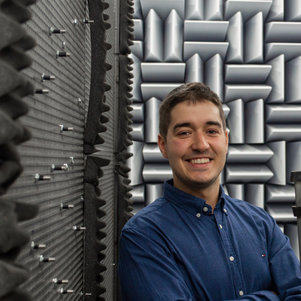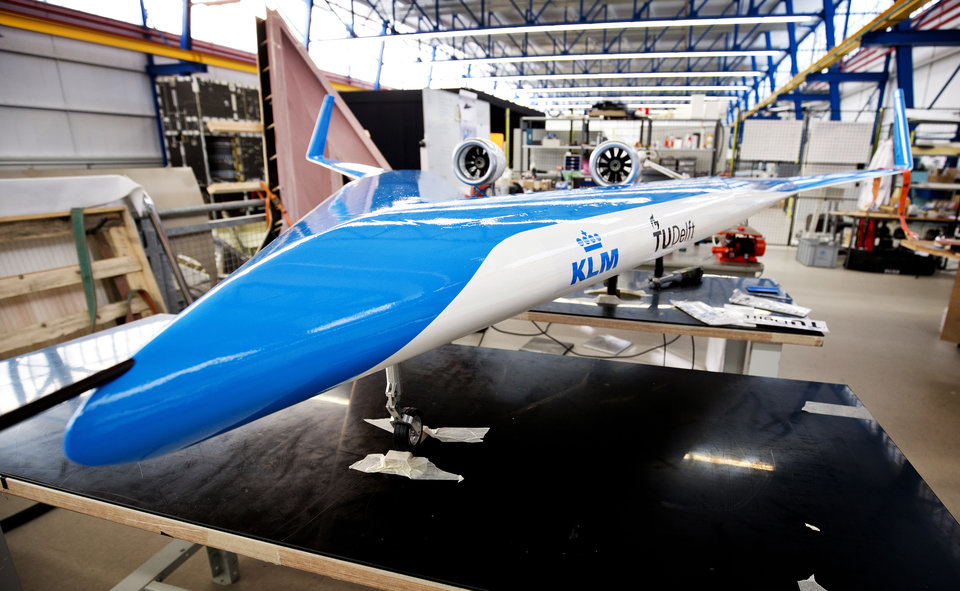Hundreds of millions of people living near airports are still at increased risk of developing hearing problems cardiovascular diseases. Roberto Merino-Martinez, who himself lives near Rotterdam Airport, is researching a relatively new topic in the field of aerospace engineering: Aeroacoustics.
An annoying whistle
Although aircraft engine noise has decreased substantially over the past decades, air flow around the airplane structure itself is still a considerable source of noise. In wind turbines, this mechanism causes the typical swooshing sound. During the first part of his PhD, in which Merino-Martinez focused on flyover measurements at Schiphol airport, he was surprised to find that many types of planes produced a huge tonal peak at a frequency of 1720 Hz. That is a sound about as annoying as a heart monitor flatlining. “It was especially loud for the Airbus A320, one of the most popular passenger aircraft of all time,” Merino-Martinez says. “It turned out to be caused by a cavity in the nose landing gear, acting like a whistle. It is my most cited research paper to date, and I believe Airbus may fix this in their newer models.”
An array of van microphones
“The noise models used when designing new planes are simply not good enough. They lack sufficient detail and often predict noise levels to be lower than they actually are”, explains Merino-Martinez. “Improvements in acoustic imaging and its algorithms are essential. A single microphone suffices to measure a general noise level. Add a second and some directionality can be obtained. But to really understand aircraft noise, to make a high-resolution image of all its sound sources, you need to use a microphone array.”
Noise created by aircraft wings
As it turned out, Merino-Martinez worked most of his PhD on integrating a versatile microphone array into the existing TU Delft laminar flow anechoic wind tunnel, in order to be able to perform the desired measurements. “The solution we came up with allows for the microphones to be rearranged depending on the details of the experiment,” he says. “Sometimes you want to move them further apart for a higher resolution image, or closer together to improve the array’s frequency response.” He also spent a lot of time improving the algorithm for reconstructing the sound sources. “I wanted to accurately measure the sound levels created by airfoils, such as the wings of an airplane or the blades of a wind turbine. A lot of noise can be created by instabilities in the airflow at the trailing edge.” Most acoustic imaging algorithms are based on point sources because they are mathematically simpler. Merino-Martinez rewrote the algorithm so that it was also possible to accurately reproduce line sources of sound. "Our approach gives better results than existing solutions, even those developed by NASA."
The silent flight of owls
Using the new array and algorithm, Merino-Martinez and his colleagues performed measurements on variations of two noise-reduction techniques. “They are both inspired by the silent flight of owls,” he says. “Their feathers create a saw-tooth profile, called serrations, which interferes with the scattering of the airflow at the trailing edge.” The researchers also investigated the insertion of porous materials or metal foams at the trailing edge, causing a similar interference. “It’s a great solution from a scientific point of view,” he says, “but real-world application is difficult, as these materials can get dirty or attract lightning.” Whereas serrations are already being commercially used by some wind turbine manufacturers, it may take another ten years for the conservative airplane industry to follow suit. “Safety first.”







